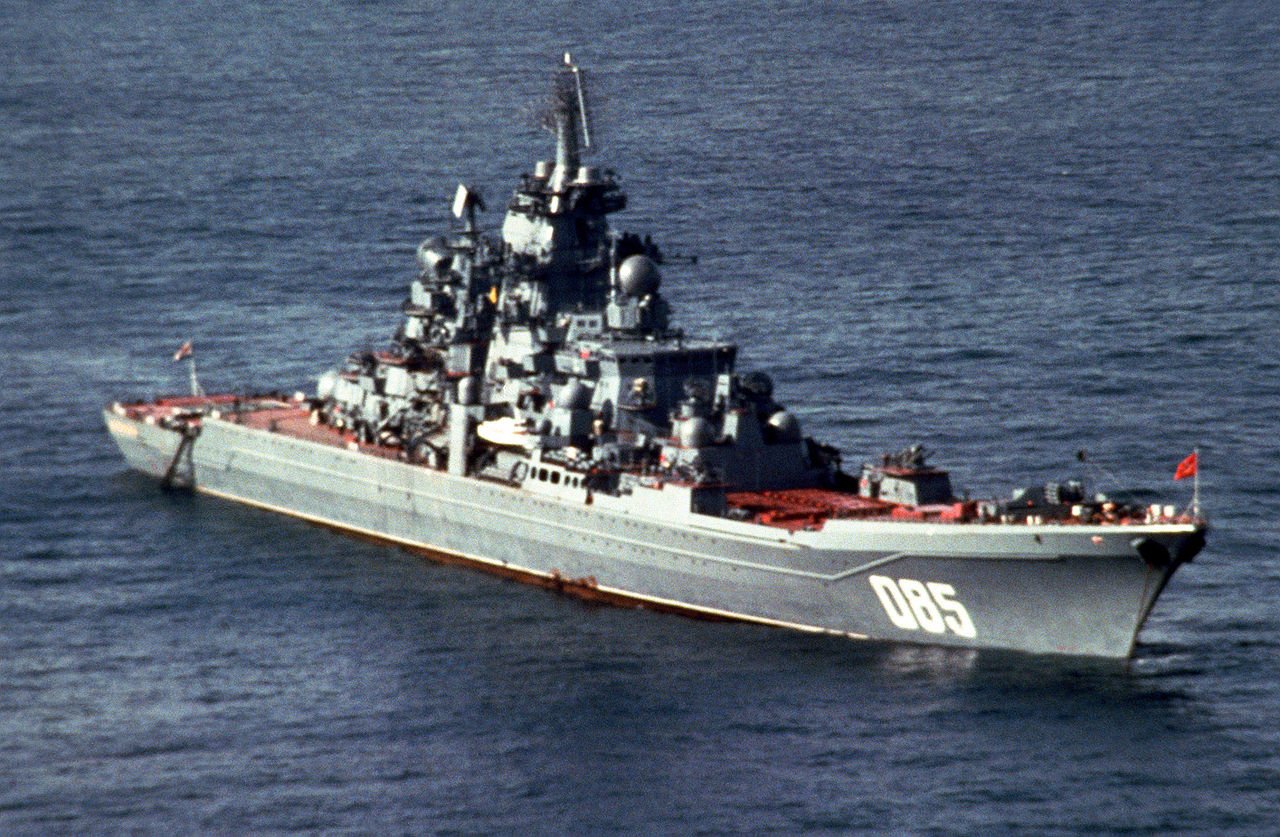Russia’s ambitious plan to relaunch its largest warship, the nuclear-powered missile cruiser Admiral Nakhimov, has been delayed indefinitely due to escalating repair and modernization costs.
Sources close to the matter told the Russian news outlet Izvestia that the missile cruiser, currently undergoing extensive repairs and modernization at the Sevmash shipbuilding enterprise, will not begin factory sea trials on November 15, as originally scheduled.
Admiral Nakhimov, a heavy nuclear-powered missile cruiser, has been under overhaul since 2015. The initial aim was to reactivate the vessel for the Russian Navy’s Northern Fleet by 2018.
However, progress has been slow, and repeated delays have pushed back its expected sea trials several times.
After missing its initial deadline, sea trials were subsequently pushed to 2023, then revised to 2024. The latest reports suggest the vessel may not be ready to enter the water until spring 2025.
The postponement of the heavy nuclear-powered missile cruiser’s sea trials was also confirmed by the Russian Navy Commander-in-Chief Admiral Alexander Moiseyev in August.
Meanwhile, the price tag for repairs and modernization has nearly doubled since the start of work, now standing at over 200 billion rubles (approximately $2 billion).
Once fully operational, Admiral Nakhimov is expected to become the most powerful ship in Russia’s fleet, playing a central role in both strategic defense and deterrence. The Russian government hopes Admiral Nakhimov will replace the Pyotr Velikiy, the fleet’s only other nuclear-powered combat surface ship.
As reported by the EurAsian Times, the Russian Navy has already decided against modernizing the colossal Pyotr Velikiy battlecruiser due to concerns over the massive costs and technical challenges.
As part of its upgrade, Admiral Nakhimov is expected to be equipped with state-of-the-art air defense systems, including S-300FM “Fort-M” and Pantsir-M, and advanced anti-submarine weaponry like Paket-NK and Otvet.
Additionally, the cruiser will be outfitted with ten universal launchers capable of firing 80 Kalibr, Onyx, and Zircon missiles, further enhancing its strike capabilities.
With the growing uncertainty surrounding the warship’s timeline, it remains to be seen when Admiral Nakhimov will finally take its place within Russia’s naval fleet.
Are Western Sanctions Responsible?
Speaking to Izvestia, Russian Military expert Vasily Dandykin explained that Admiral Nakhimov was built in the 20th century and initially bore the name Kalinin. Recalling his time serving in the Arctic, he mentioned witnessing the ship undergoing its early tests.
However, the geopolitical and economic upheavals of the 1990s significantly impacted its development. Initially, the vessel was armed with around 20 P-700 Granit long-range supersonic anti-ship missiles.
These missiles are now outdated, though Admiral Nakhimov remains one of the heaviest surface warships in the world.
Dandykin further noted that, given the demands of the ongoing special military operation in Ukraine, the defense industry is prioritizing the construction of ships deemed most essential for current needs.
On the other hand, Russian military expert Dmitry Boltenkov provided a deeper understanding of the project’s complexities, describing the cruiser’s refurbishment as akin to a complete rebuild.
According to Boltenkov, the Sevmash shipyard has essentially stripped Admiral Nakhimov down to its hull and is replacing all internal systems.
This overhaul involves a wide range of suppliers for combat systems and weaponry. Due to Russia’s ongoing import substitution efforts, many of the components that were once sourced from Western countries now need to be produced domestically.
He suggested that the initial plans may have included procuring some auxiliary systems from the West, but the shift in the geopolitical landscape has forced Russia to adapt and develop these systems domestically.

Sevmash has prior experience in large-scale ship conversions, including transforming the aircraft carrier Admiral Gorshkov into India’s Vikramaditya. Still, Boltenkov acknowledged that the ongoing modernization of Admiral Nakhimov remains an extremely challenging process.
Despite these setbacks, he expressed confidence that Admiral Nakhimov will eventually emerge as a powerful asset for the Russian Navy, boasting advanced missile systems, including the supersonic Onyx anti-ship missile, Caliber cruise missiles, and sophisticated air defense systems.
However, some experts remain skeptical of the project’s progress. Defense expert Alex Luck noted that the process has been slow even before the imposition of sanctions.
“Modernization of this cruiser was going nowhere fast for years before any sanctions were in place. But I see a new narrative taking shape excusing this train/shipwreck,” he said.







